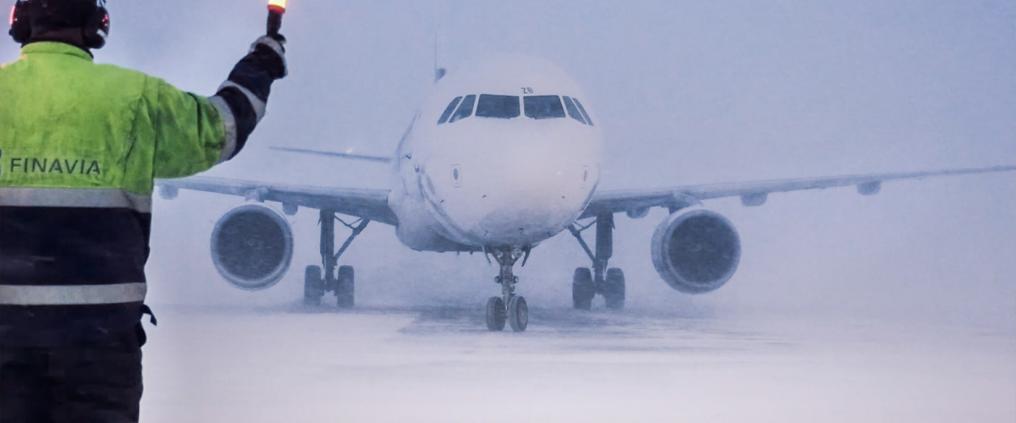In 2016, over a million passengers visited Lapland's airports. Total of eight international routes have been opened over the current winter season, and the number of charter flights is also on the increase.
To ensure smooth travelling in the polar region’s occasionally challenging conditions, the airports need steadfast expertise and solid snowhow competence.
Tapio Aikio and Tapio Nurmela at Rovaniemi Airport, Riku Lukkari at Kittilä Airport and Miikka Vakkilainen at Ivalo Airport make sure that planes can land and take off safely – whatever the weather.
“In the winter, the snow keeps us busy,” states Chief Air Traffic Controller Tapio Nurmela.
Snow falls early in Lapland and stays on average until April or May.
“A metre of snow in late winter can be considered a standard," says foreman Tapio Aikio from Rovaniemi Airport’s Maintenance Services.
Fortunately, Finavia’s airports are well known for their snowhow, and with the help of this Finnish snow expertise, the airports stay operational throughout the year.
The wintry conditions create challenges for airport maintenance. The slipperiness of the runway and changes in temperature on it are the most critical factors from the point of view of the employees.
According to Riku Lukkari, who works in the maintenance services at Kittilä Airport, Lapland’s airports have the right equipment and knowledge to deal with the weather.
“Snow is not an issue”, says Lukkari.
The condition of the runways is maintained by using runway brooms, snow ploughs, snow blowers and friction tester vehicles. The friction of a runway is measured along its length and then analysed. The data is communicated quickly between maintenance, air traffic control and airline pilots.
The slipperiness of the runways can mean unfamiliar conditions for some airlines, and passing the correct information to arriving and departing flights is of primary importance.
“Based on the information they receive, the pilot makes the decision about whether the runway provides enough friction for a safe take-off or landing," Miikka Vakkilainen, shift supervisor at Ivalo Airport’s Maintenance Services explains.
At times, occasional snow storms may momentarily make landing more challenging if strong winds and heavy snow prevent sufficient surface friction on the runway.
But generally speaking, air traffic in Lapland operates uninterrupted, even in weather conditions that may completely cripple operations elsewhere in the world.
The highly capable staff at our most northerly airports are deservedly proud of their snowhow.



